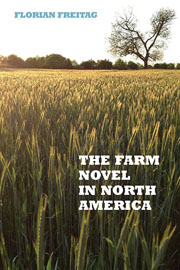 The Farm Novel in North America
The Farm Novel in North America Published online by Cambridge University Press: 05 December 2013
During the first half of the nineteenth century North American prose fiction and life writing increasingly focused on the farm. Starting in the 1820s, a growing number of novels, collections of sketches, travclogues, settlers' accounts, and journals from the United States, English Canada, and French Canada dealt with farm life. Among the authors of these texts were professional writers such as James Fenimore Cooper and Nathaniel Hawthorne; the domestic fictionists of the middle of the nineteenth century; practitioners of the liberal professions and politicians who wrote in their spare time, such as Patrice Lacombe, Pierre-Joseph-Olivier Chaveau, and Antoine Gérin-Lajoie; travelers to regions that were in the process of being agriculturally settled such as Margaret Fuller; absentee or present landowners such as Mary Austin Holley or Caroline M. Kirkland; and actual settlers and farmers such as Mary O'Brien, Catharine Parr Traill, and Susanna Moodie.
These writers depicted farm life in North America in a large variety of ways, from pastoral, fulfilling, and idealistic to dreary, disenchanting, and iconoclastic. Only very few of these texts, however, raise issues of the nation in connection with their focus on farm life and thus anticipate the way farms, farmers, and farming would later be portrayed in the North American farm novel, especially in the French Canadian roman de la terre. More specifically, while they feature certain elements that would also characterize later American, English Canadian, and French Canadian farm novels, most of these texts combine these elements in ways that make it yet impossible to identify distinctly national traditions in the portrayal of the farm.
To save this book to your Kindle, first ensure [email protected] is added to your Approved Personal Document E-mail List under your Personal Document Settings on the Manage Your Content and Devices page of your Amazon account. Then enter the ‘name’ part of your Kindle email address below. Find out more about saving to your Kindle.
Note you can select to save to either the @free.kindle.com or @kindle.com variations. ‘@free.kindle.com’ emails are free but can only be saved to your device when it is connected to wi-fi. ‘@kindle.com’ emails can be delivered even when you are not connected to wi-fi, but note that service fees apply.
Find out more about the Kindle Personal Document Service.
To save content items to your account, please confirm that you agree to abide by our usage policies. If this is the first time you use this feature, you will be asked to authorise Cambridge Core to connect with your account. Find out more about saving content to Dropbox.
To save content items to your account, please confirm that you agree to abide by our usage policies. If this is the first time you use this feature, you will be asked to authorise Cambridge Core to connect with your account. Find out more about saving content to Google Drive.